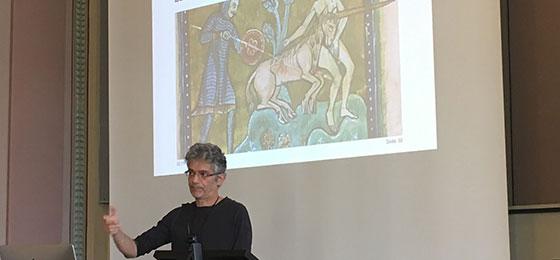Discovering French literature through bestiaries

Specialists in medieval French literature at the University of Zurich invited high-school students to explore the origins of unicorns, dragons and mermaids.
It is often reported that motivating high-school students to learn French is hard. By that measure, trying to interest them in medieval French literature would be mission impossible. But Richard Trachsler, professor of medieval French literature at the University of Zurich, has a solution: he invited students to discover medieval bestiaries, i.e. manuscript collections of fables about real or imaginary animals. “Unicorns and dragons appear in many popular series, such as Harry Potter and Game of Thrones”, says Trachsler. “We thought we should make the most of this opportunity to capture the attention of young people. And it worked!”
Trachsler and his team started by providing instruction on medieval bestiaries to high-school teachers in all the German-speaking cantons. The team also supplied educational materials to help organise workshops in which adolescents could create their own bestiaries. Individual classes as well as entire grades were then invited for themed days consisting of a general introduction followed by courses devoted to specific animals.
“Many students were interested in discovering the symbolic origins not only of the fantastic beasts in their favourite series, but also other iconic animals such as wolves and lions”, says Trachsler. Medieval French-language bestiaries, he adds, feature prominently among European popular literature. “In these manuscripts, animals are classified according to Christian values: the lion symbolises Christ, and the fox symbolises the devil. These descriptions reflect a system of thought and beliefs about the universe that prevailed 800 years ago. They also raise questions about our current representations of the animal world, which are descended from that way of thinking.”
Over a period of two years, Trachsler hosted more than 300 high-school students thanks to funding from the SNSF’s Agora programme. Demand among teachers was high, he says. “This project provides a unique opportunity to communicate the results of our research to the public. It also enables us to explain why research is important: without such investigations, all our knowledge of medieval literature and the symbolism of the animals would be lost.” In the future, Trachsler would like to spend more time sharing his passion, whether in the classroom, through conferences or at the Zurich zoo.